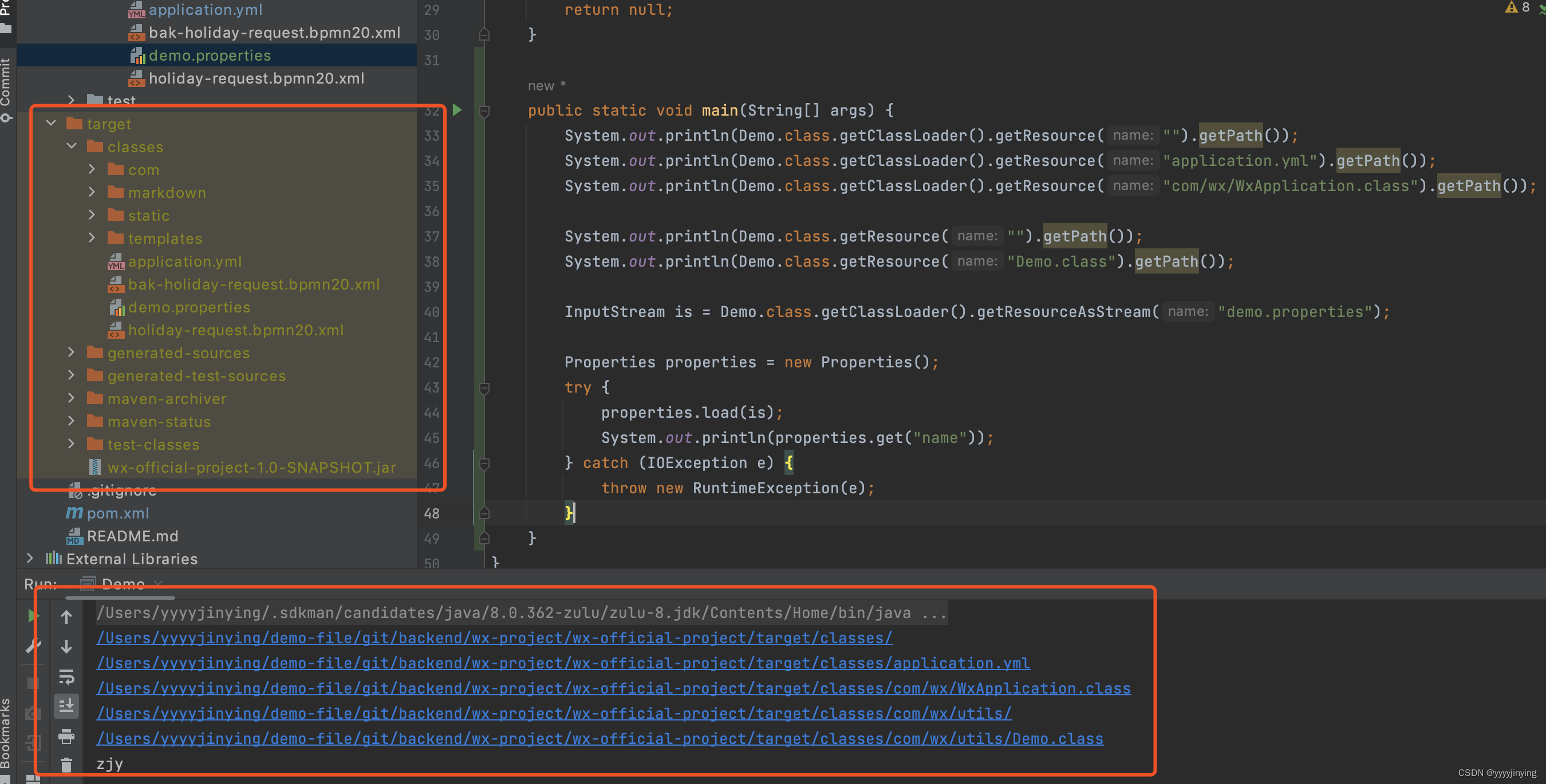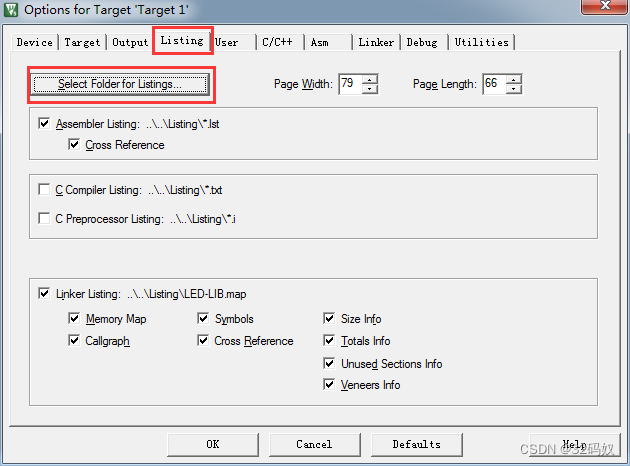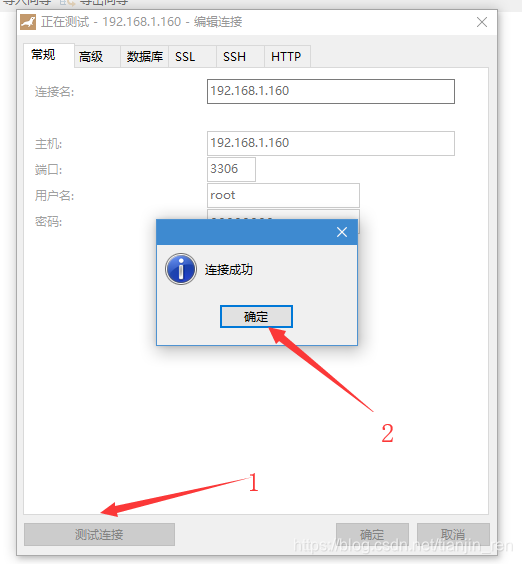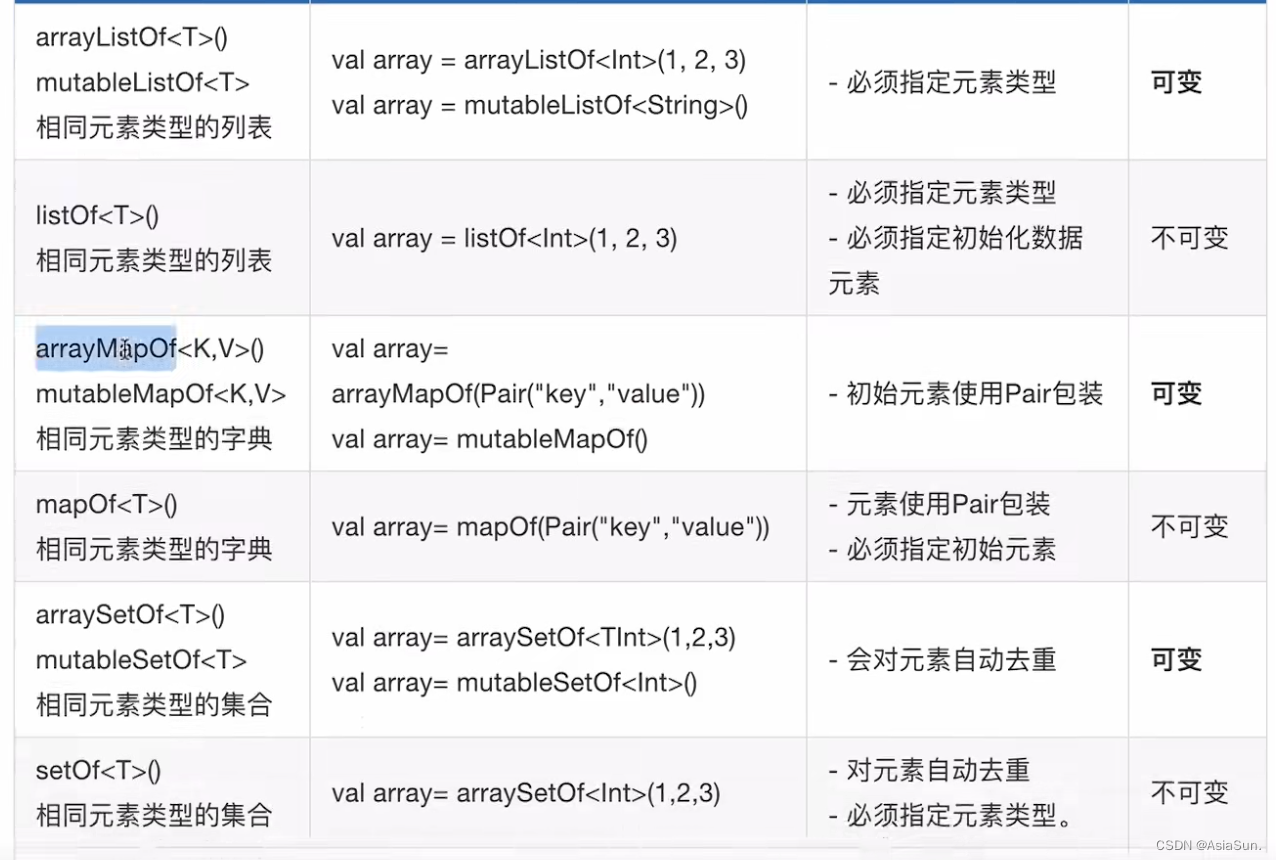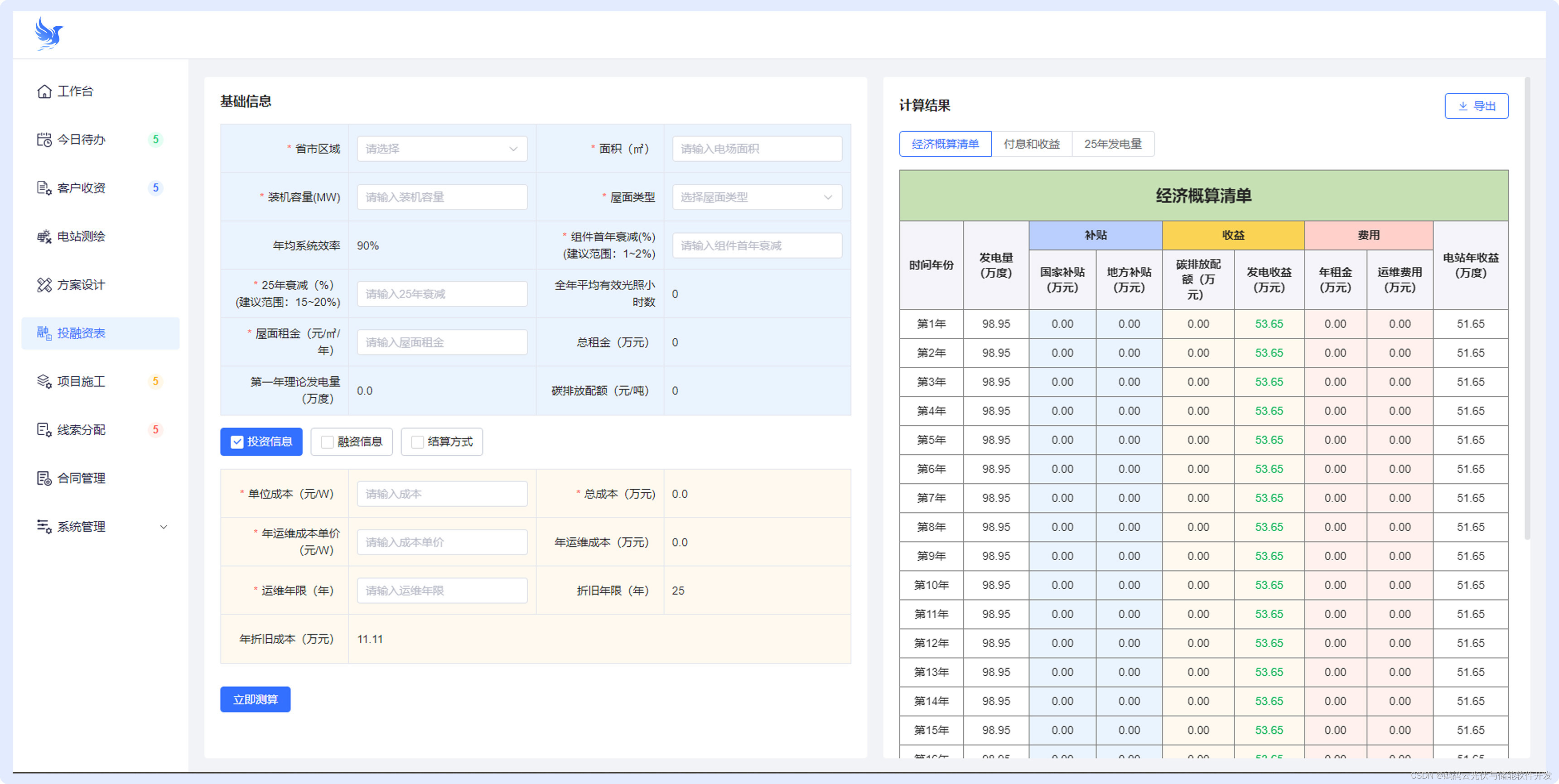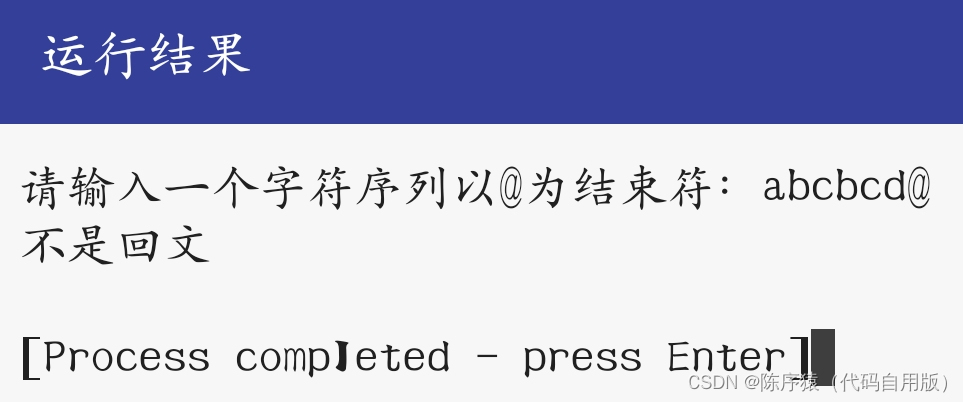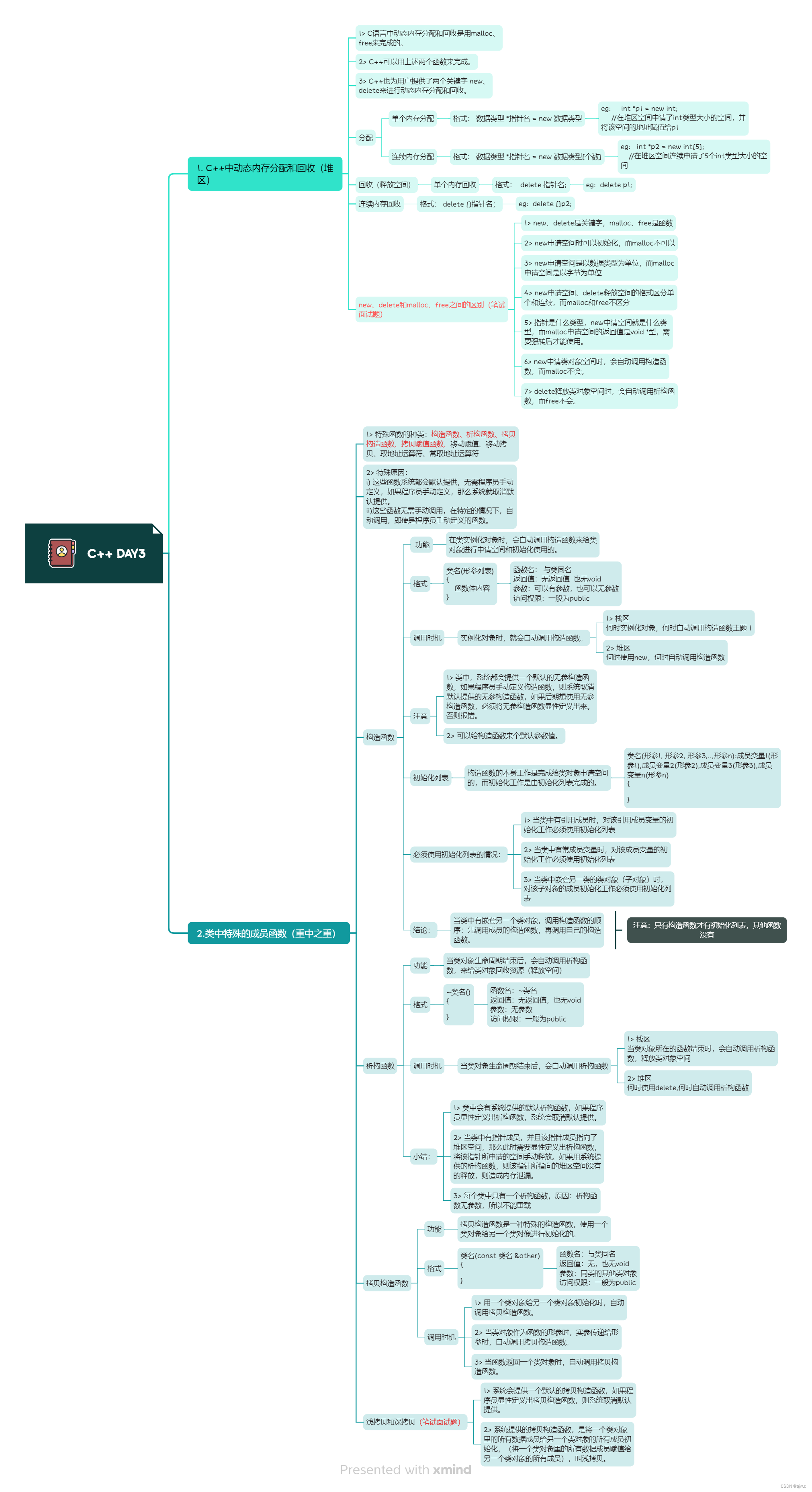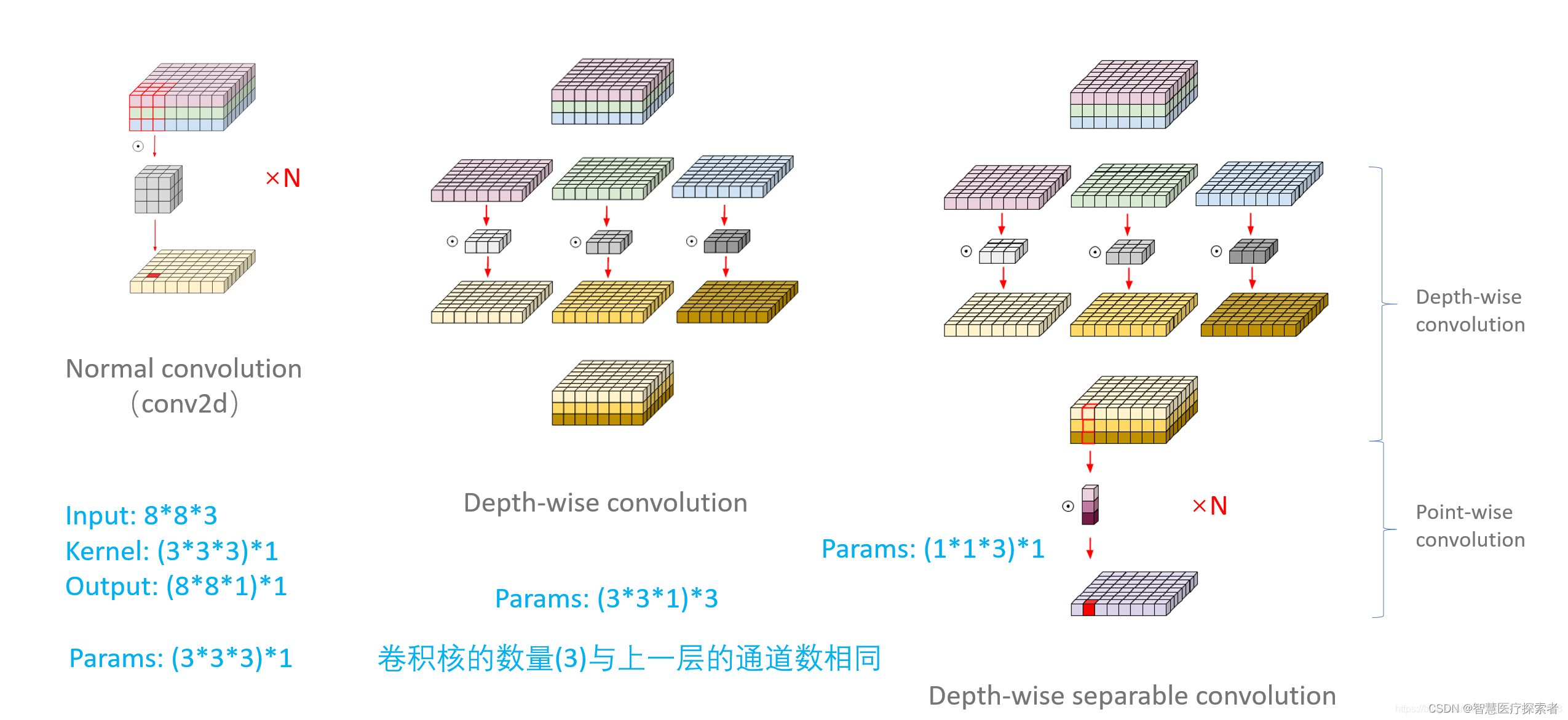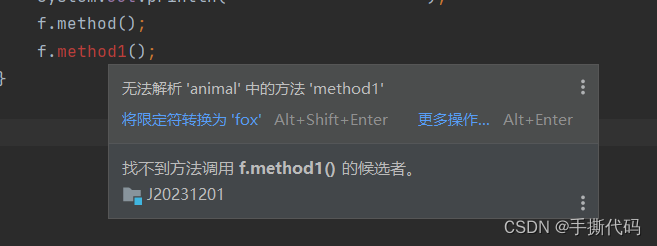文章目录
- 前言
- 一、输入系统的基本组成部分
- 二、输入系统相关源码分析
- 1、IMS 构建
- 1.1、SystemServer # startOtherServices()
- 1.2、InputManagerService
- 1.3、NativeInputManager # nativeInit()
- 1.4、NativeInputManager
- 1.5、InputManager
- 1.6、InputDispatcher
- 1.7、InputReader
- 1.8、EventHub
- 1.9、小结
- 2、IMS 启动
- 2.1、IMS # start()
- 2.2、NativeInputManager # nativeStart()
- 2.3、InputManager # start()
- 2.4、InputDispatcher # start()
- 2.5、InputReader # start()
- 2.6、InputThread
- 3、IMS 系统就绪
- 三、总结
- 1、IMS 启动时序图
- 2、IMS 成员关系图
- 参考
前言
Android 输入系统(Input System) 的工作原理,包括:输入设备的管理、输入事件的加工方式及派发流程。首先输入设备包括:触摸屏,键盘,鼠标和手柄等,其中触摸屏与键盘是 Android 最普遍也是最标准的输入设备。当用户操作输入设备时,Linux 内核接收到相应的硬件中断,然后将中断加工成原始的输入事件数据并写入其对应的设备节点中,在用户空间可以通过输入系统内部的读取函数将原始事件数据读出,并进行一系列的翻译加工成 Android 输入事件,然后在所有的窗口中寻找合适的事件接收者,并派发给它来消费该输入事件。可见,输入系统在整个输入事件处理过程中起到了承上启下的衔接作用。
一、输入系统的基本组成部分

上图展示了输入事件的处理流程以及输入系统中最基本的参与者,下面简要介绍一下各个参与者:
- Linux 内核:接受输入设备的中断,并将原始输入事件的数据写入设备节点中;
- 设备节点:内核与 InputManagerService 的桥梁,它将原始事件的数据暴露给用户空间,以便 InputManagerService 可以从中读取事件;
- InputManagerService:Android 系统服务,以后简称 IMS,其分为 Java 层和 Native 层两部分。Java 层负责与 WindowManagerService 通信。而 Native 层则是InputReader 和 InputDispatcher 两个输入系统关键组件的运行容器;
- EventHub:直接访问所有的设备节点。并且正如其名字所描述的,它通过一个名为 getEvents( ) 的函数将所有输入系统相关的待处理的底层事件返回给使用者,包括原始输入事件、设备节点的增删等。
- InputReader:IMS 中的关键组件之一,运行于一个独立的线程中,负责管理输入设备的列表与配置,以及进行输入事件的加工处理。通过其线程循环不断地通过 getEvent( ) 函数从 EventHub 中将事件取出并进行处理。对于设备节点的增删事件,将会更新输入设备列表与配置。对于原始输入事件,InputReader 对其进行翻译、组装、封装为包含更多信息、更具可读性的输入事件,然后交给 InputDispatcher 进行派发;
- InputReaderPolicy:为 InputReader 的事件加工处理提供一些策略配置,例如键盘布局信息等;
- InputDispatcher:IMS 中的另一个关键组件,也运行于一个独立的线程中。InputDispatcher 中保管了来自 WindowManagerService 的所有窗口的信息,其收到来自 InputReader 的输入事件后,会在其保管的窗口中寻找合适的窗口,并将事件派发给此窗口;
- InputDispatcherPolicy:为 InputDispatcher 的派发过程提供策略控制。例如截取某些特定的输入事件用作特殊用途,或者阻止将某些事件派发给目标窗口。一个典型的例子就是 HOME 键被 InputDispatcherPolicy 截取到 PhoneWindowManager 中进行处理,并阻止窗口收到 HOME 键按下的事件;
- WindowManagerService:虽不是输入系统中的成员,但却对 InputDispatcher 的正常工作起到了至关重要的作用。当新建窗口时,WMS 为新窗口和 IMS 之间创建了事件传递所用的通道。另外,WMS 还将所有窗口的信息,包括窗口的可点击区域、焦点窗口等信息,实时地更新到 IMS 的 InputDispatcher 中,使得 InputDispatcher 可以正确地将事件派发到指定的窗口;
- ViewRootImpl:对某些窗口,如壁纸窗口、SurfaceView 的窗口来说,窗口就是输入事件派发的终点。而对其他的如 Activity、对话框等使用了 Android 控件系统的窗口来说,输入事件的终点是控件 View。ViewRootImpl 将窗口所接收的输入事件沿着控件树将事件派发给感兴趣的控件 View;
二、输入系统相关源码分析
我们知道,Zygote 进程创建并启动后,在 fork 出的子进程 SystemServer 的初始化过程中启动 Android 系统所有的 Service 服务,这些系统服务分为三大类:引导服务、核心服务及其他服务,具体的启动流程可参考探索Framework之SystemServer进程的启动详解。
输入系统服务 IMS 是在启动其他服务里面启动的,接下来从源码的角度来继续探索分析。
1、IMS 构建
在 SystemServer 类中找到启动其他服务 startOtherServices() 方法的代码,提取主要的逻辑代码进行分析,源码如下:
1.1、SystemServer # startOtherServices()
xref: /frameworks/base/services/java/com/android/server/SystemServer.java
public final class SystemServer implements Dumpable {......private void startOtherServices(@NonNull TimingsTraceAndSlog t) {final Context context = mSystemContext;WindowManagerService wm = null;......InputManagerService inputManager = null;......try {......// 启动 InputManagerService 服务t.traceBegin("StartInputManagerService"); // 新建 InputManagerService 对象inputManager = new InputManagerService(context);......t.traceBegin("StartWindowManagerService"); // 启动 WindowManagerService 服务mSystemServiceManager.startBootPhase(t, SystemService.PHASE_WAIT_FOR_SENSOR_SERVICE);// 使用新建的 IMS 对象来构建 WMS 对象wm = WindowManagerService.main(context, inputManager, !mFirstBoot, mOnlyCore,new PhoneWindowManager(), mActivityManagerService.mActivityTaskManager);......// 将 InputManagerService 发布到 ServiceManager 以便调用者可以访问 IMS 提供的接口ServiceManager.addService(Context.INPUT_SERVICE, inputManager,/* allowIsolated= */ false, DUMP_FLAG_PRIORITY_CRITICAL);t.traceBegin("SetWindowManagerService"); // ActivityManagerService 设置 WindowManagerServicemActivityManagerService.setWindowManager(wm);t.traceBegin("StartInputManager"); // 设置向 WMS 发起回调的 callback 对象inputManager.setWindowManagerCallbacks(wm.getInputManagerCallback());inputManager.start(); // 启动 InputManagerService,具体见......} catch (Throwable e) {......// 日志输出并抛出异常}......final InputManagerService inputManagerF = inputManager;t.traceBegin("MakeInputManagerServiceReady");try {if (inputManagerF != null) {// 输入系统 IMS 准备就绪inputManagerF.systemRunning();}} catch (Throwable e) {reportWtf("Notifying InputManagerService running", e);}......}......
}
IMS 的启动流程可以分为以下三个步骤:
- 构建 IMS 实例对象,并建立上层与底层的映射关系。
- 启动 IMS,其内部就是启动 native 层输入系统的几个重要参与者(后续会分析)。
- IMS 系统就绪,此时 Java 层会同步一些配置给 native 层输入系统。
首先是 IMS 实例对象的构建,分析查看 IMS 类的源码
1.2、InputManagerService
xref: /frameworks/base/services/core/java/com/android/server/input/InputManagerService.java
public class InputManagerService extends IInputManager.Stubimplements Watchdog.Monitor {......private final Context mContext;private final InputManagerHandler mHandler;......private static native long nativeInit(InputManagerService service,Context context, MessageQueue messageQueue);......public InputManagerService(Context context) {this.mContext = context;// 获取 DisplayThread 的 Looper 创建 IMS 内部的 InputManagerHandler 对象this.mHandler = new InputManagerHandler(DisplayThread.get().getLooper());mStaticAssociations = loadStaticInputPortAssociations();mUseDevInputEventForAudioJack =context.getResources().getBoolean(R.bool.config_useDevInputEventForAudioJack);Slog.i(TAG, "Initializing input manager, mUseDevInputEventForAudioJack="+ mUseDevInputEventForAudioJack);// 每一个分为 Java 和 Native 两部分的对象在创建时都会有一个 native 函数// 在创建 Java 层对象的同时 native 层也创建一个,注意:使用的是同一个 Looper 对象// mPtr 指向底层创建的 NativeInputManager 对象mPtr = nativeInit(this, mContext, mHandler.getLooper().getQueue());String doubleTouchGestureEnablePath = context.getResources().getString(R.string.config_doubleTouchGestureEnableFile);mDoubleTouchGestureEnableFile = TextUtils.isEmpty(doubleTouchGestureEnablePath) ? null :new File(doubleTouchGestureEnablePath);// 新建 IMS 的本地系统服务 LocalService,其继承自 InputManagerInternal 抽象接口,并加入到 LocalServices 中LocalServices.addService(InputManagerInternal.class, new LocalService());}
}
方法中,获取 DisplayThread 的 Looper,新建 InputManagerHandler 对象,然后调用 native 层的 nativeInit() 函数,创建NativeInputManager 对象,最后新建 IMS 的本地系统服务 LocalService,其继承自 InputManagerInternal 抽象接口,并加入到 LocalServices 中。
DisplayThread 在 system_server 进程中是单例的,且只能被 WindowManager、DisplayManager、InputManager 使用。
1.3、NativeInputManager # nativeInit()
xref: /frameworks/base/services/core/jni/com_android_server_input_InputManagerService.cpp
static const JNINativeMethod gInputManagerMethods[] = { // JNI 注册的映射关系/* name, signature, funcPtr */{"nativeInit","(Lcom/android/server/input/InputManagerService;Landroid/content/Context;Landroid/os/""MessageQueue;)J",(void*)nativeInit},
};static jlong nativeInit(JNIEnv*env, jclass /* clazz */,jobject serviceObj, jobject contextObj, jobject messageQueueObj) {// 由传入的 Java 层的 MessageQueue 转换获取 native 层的 MessageQueuesp<MessageQueue> messageQueue = android_os_MessageQueue_getMessageQueue(env, messageQueueObj);if (messageQueue == nullptr) {jniThrowRuntimeException(env, "MessageQueue is not initialized.");return 0;}// 新建 NativeInputManager 对象,此对象将是 native 层组件与 Java 层 IMS 进行通信的桥梁NativeInputManager * im = new NativeInputManager(contextObj, serviceObj,messageQueue -> getLooper());im -> incStrong(0);// 返回指向 NativeInputManager 对象的指针给 Java 层的 IMS,IMS 将其保存在 mPtr 成员变量中return reinterpret_cast < jlong > (im);
}
通过 JNI 注册的映射关系,找到 native 层的 nativeInit() 函数,首先由传入的 Java 层的 MessageQueue 转换获取 native 层的 NativeMessageQueue 对象,然后新建 NativeInputManager 对象。
1.4、NativeInputManager
xref: /frameworks/base/services/core/jni/com_android_server_input_InputManagerService.cpp
class NativeInputManager : public virtual RefBase,public virtual InputReaderPolicyInterface,public virtual InputDispatcherPolicyInterface,public virtual PointerControllerPolicyInterface {public:NativeInputManager(jobject contextObj, jobject serviceObj, const sp<Looper>& looper);inline sp<InputManagerInterface> getInputManager() const { return mInputManager; }private:sp<InputManagerInterface> mInputManager; jobject mServiceObj; // IMS 对象sp<Looper> mLooper; // Looper 对象Mutex mLock;struct Locked {......例如,mLocked.showTouches 是// 如果为 True,则启用指针手势bool pointerGesturesEnabled;// 由开发者选项中 "Show taps" 决定的,其功能是在屏幕上显示一个触摸点bool showTouches;......} mLocked GUARDED_BY(mLock);std::atomic<bool> mInteractive;......static inline JNIEnv* jniEnv() {return AndroidRuntime::getJNIEnv();}
};NativeInputManager::NativeInputManager(jobject contextObj,jobject serviceObj, const sp<Looper>&looper) :mLooper(looper),mInteractive(true) {JNIEnv * env = jniEnv();// 保存 Java 层的 InputManagerService 对象mServiceObj = env -> NewGlobalRef(serviceObj);{ // mLocked 的类型是 struct Locked,这里初始化了一些参数,这些参数会被 Java 层改变AutoMutex _l (mLock);mLocked.systemUiLightsOut = false;mLocked.pointerSpeed = 0;mLocked.pointerGesturesEnabled = true;mLocked.showTouches = false;mLocked.pointerCapture = false;mLocked.pointerDisplayId = ADISPLAY_ID_DEFAULT;}mInteractive = true;// 创建了 native 层的 InputManager,它才是底层输入系统的服务InputManager * im = new InputManager(this, this);mInputManager = im;// 将 InputManager 注册到 ServiceManager 中defaultServiceManager()->addService(String16("inputflinger"), im);
}
- 在 NativeInputManager 的构造函数中,创建一个全局引用,并通过 mServiceObj 指向 Java 层的 IMS 对象,便于后续可以通过 mServiceObj 调用 Java 层 IMS 对象的方法。
- 初始化参数,这里要注意一个结构体变量 mLocked,它的一些参数都是由 Java 层控制的。
- 然后将自己作为参数来新建 InputManager 对象,并将 InputManager 注册到 ServiceManager 中,InputManager 才是 native 层输入系统的服务。
注意:由 NativeInputManager 类的声明可以看到,其实现了 InputReaderPolicyInterface 与 InputDispatcherPolicyInterface 两个接口。
1.5、InputManager
xref: /frameworks/native/services/inputflinger/InputManager.h
class InputManager : public InputManagerInterface, public BnInputFlinger {
protected:~InputManager() override;public:InputManager(const sp<InputReaderPolicyInterface>& readerPolicy,const sp<InputDispatcherPolicyInterface>& dispatcherPolicy);......
private:sp<InputReaderInterface> mReader;sp<InputClassifierInterface> mClassifier;sp<InputDispatcherInterface> mDispatcher;
};
xref: /frameworks/native/services/inputflinger/InputManager.cpp
InputManager::InputManager(const sp<InputReaderPolicyInterface>& readerPolicy,const sp<InputDispatcherPolicyInterface>& dispatcherPolicy) {// 创建 InputDispatcher 对象,使用 InputDispatcherPolicyInterface 接口,用于对事件进行分发mDispatcher = createInputDispatcher(dispatcherPolicy);// 创建 InputClassifier 对象,使用 InputListenerInterface,用于对事件分类mClassifier = new InputClassifier(mDispatcher);// 创建 InputReader 对象,使用 InputReaderPolicyInterface 和 InputListenerInterface// 其通过 EventHub 监听"/dev/input"事件,获取事件,然后把事件加工后,发送给 InputClassfiermReader = createInputReader(readerPolicy, mClassifier);
}
在 InputManager 内部创建了三个子模块:InputReader、InputClassifier、InputDispatcher,其作用如下:
- InputReader:负责从 EventHub 中获取事件,然后把事件加工后,发送给 InputClassfier。
- InputClassifer:负责把事件发送给 InputDispatcher,但是它会对触摸事件进行一个分类工作。
- InputDispatcher:对进行事件分发。
此外,在上一小节的分析中,我们知道在构建 InputManager 实例对象时使用了两个 this 参数,而 InputManager 构造函数需要的两个接口参数正是由 NativeInputManager 实现的,而具体使用这两个接口的不是 InputManager 自身,而是它内部的子模块 InputDispatcher 和 InputReader。
InputDispatcher 和 InputReader 在构建时都传递了 NativeInputManager 对象参数,并赋值到各自的 mPolicy 变量,后续可直接通过 mPolicy 调用 Java 层 IMS 对象方法,因此 InputManager 向 Java 层通信的能力是由子模块 InputDispatcher 和 InputReader 实现的。
接下来首先来看看 InputDispatcher 是如何通过 createInputDispatcher() 函数创建的,详见接下来两节的源码分析。
1.6、InputDispatcher
xref: /frameworks/native/services/inputflinger/dispatcher/InputDispatcherFactory.cpp
sp<InputDispatcherInterface> createInputDispatcher(const sp<InputDispatcherPolicyInterface>& policy) {return new android::inputdispatcher::InputDispatcher(policy);
}
方法很简单,内部直接新建 InputDispatcher 对象,再继续查看 InputDispatcher 的构造函数:
xref: /frameworks/native/services/inputflinger/dispatcher/InputDispatcher.h
class InputDispatcher : public android::InputDispatcherInterface {
protected:~InputDispatcher() override;public:explicit InputDispatcher(const sp<InputDispatcherPolicyInterface>& policy);
......
private:std::unique_ptr<InputThread> mThread;sp<InputDispatcherPolicyInterface> mPolicy;sp<Looper> mLooper;sp<InputReporterInterface> mReporter;
};
xref: /frameworks/native/services/inputflinger/dispatcher/InputDispatcher.cpp
InputDispatcher::InputDispatcher(const sp<InputDispatcherPolicyInterface>& policy): mPolicy(policy),mPendingEvent(nullptr),mLastDropReason(DropReason::NOT_DROPPED),mIdGenerator(IdGenerator::Source::INPUT_DISPATCHER),mAppSwitchSawKeyDown(false),mAppSwitchDueTime(LONG_LONG_MAX),mNextUnblockedEvent(nullptr),mDispatchEnabled(false),mDispatchFrozen(false),mInputFilterEnabled(false),// mInTouchMode will be initialized by the WindowManager to the default device config.// To avoid leaking stack in case that call never comes, and for tests,// initialize it here anyways.mInTouchMode(true),mMaximumObscuringOpacityForTouch(1.0f),mFocusedDisplayId(ADISPLAY_ID_DEFAULT),mFocusedWindowRequestedPointerCapture(false),mWindowTokenWithPointerCapture(nullptr),mLatencyAggregator(),mLatencyTracker(&mLatencyAggregator),mCompatService(getCompatService()) {mLooper = new Looper(false); // 新建自己的 Looper 对象mReporter = createInputReporter(); // 新建 InputReporter 对象mKeyRepeatState.lastKeyEntry = nullptr;policy->getDispatcherConfiguration(&mConfig);
}
在调用 InputDispatcher 的构造函数构建实例对象的同时将入参 policy 赋值给 mPolicy 进行保存 (这里入参 policy 即是 NativeInputManager 对象)。其次新建自己的 Looper 对象,然后使用类似创建 InputDispatcher 的 createInputReporter() 函数新建 InputReporter 对象,代码比较简单,不再深入追踪,感兴趣的可自行查看。
1.7、InputReader
接着来看看 InputReader 是如何通过 createInputReader() 函数创建的,一起跟着源码来学习。
xref: /frameworks/native/services/inputflinger/reader/InputReaderFactory.cpp
sp<InputReaderInterface> createInputReader(const sp<InputReaderPolicyInterface>& policy,const sp<InputListenerInterface>& listener) {// 创建 EventHub 对象传入到 InputReader 的构造函数中来新建 InputReader 对象return new InputReader(std::make_unique<EventHub>(), policy, listener);
}
该方法里面,在新建 InputReader 对象时,结合 InputReader 类的构造函数可知,第一个参数是 EventHub 的实例对象,那么 EventHub 对象是怎么创建的呢?
这里需要知道一些 C++ 有关的知识,std::make_unique 的语法如下:
template<typename T, typename... Args>
std::unique_ptr<T> make_unique(Args&&... args);
std::make_unique:是 C++11 标准引入的一个模版函数,用于动态分配指定类型的内存,并返回一个指向分配内存的唯一指针 (即 std::unique_ptr)。语法中,T 是指定的类型,Args 是可变长模板参数包,用于传递给指定类型的构造函数的参数。在调用 std::make_unique 时,通过 Args 包传入构造函数的参数会被转发给类型 T 的构造函数,以生成相应的对象实例。该函数返回的指针是一个 std::unique_ptr 类型,表示一个拥有指向动态内存的所有权的对象。
xref: /frameworks/native/services/inputflinger/reader/include/InputReader.h
class InputReader : public InputReaderInterface {
public:InputReader(std::shared_ptr<EventHubInterface> eventHub,const sp<InputReaderPolicyInterface>& policy,const sp<InputListenerInterface>& listener);virtual ~InputReader();
protected:// 在循环过程的每次迭代中,InputReader 读取并处理一条来自 EventHub 的传入消息void loopOnce();private:std::unique_ptr<InputThread> mThread;std::shared_ptr<EventHubInterface> mEventHub;sp<InputReaderPolicyInterface> mPolicy;sp<QueuedInputListener> mQueuedListener;
};
xref: /frameworks/native/services/inputflinger/reader/InputReader.cpp
InputReader::InputReader(std::shared_ptr<EventHubInterface> eventHub,const sp<InputReaderPolicyInterface>& policy,const sp<InputListenerInterface>& listener): mContext(this),mEventHub(eventHub),mPolicy(policy),mGlobalMetaState(0),mLedMetaState(AMETA_NUM_LOCK_ON),mGeneration(1),mNextInputDeviceId(END_RESERVED_ID),mDisableVirtualKeysTimeout(LLONG_MIN),mNextTimeout(LLONG_MAX),mConfigurationChangesToRefresh(0) {mQueuedListener = new QueuedInputListener(listener);{ // acquire lockstd::scoped_lock _l(mLock);refreshConfigurationLocked(0);updateGlobalMetaStateLocked();} // release lock
}
与构建 InputDispatcher 对象类似,在调用 InputReader 的构造函数构建实例对象的同时将入参 policy 赋值给 mPolicy,eventHub 对象赋值给 mEventHub 保存,同时新建 QueuedInputListener 监听对象。
通过前一小节的分析可知,EventHub 实例对象是通过调用 std::make_unique() 函数来创建的,那接下来一起去看看 EventHub 具体都做了些什么?
1.8、EventHub
xref: /frameworks/native/services/inputflinger/reader/include/EventHub.h
class EventHub : public EventHubInterface {
public:EventHub();
private:int32_t mNextDeviceId;BitSet32 mControllerNumbers;std::unordered_map<int32_t, std::unique_ptr<Device>> mDevices;std::vector<std::unique_ptr<Device>> mOpeningDevices;std::vector<std::unique_ptr<Device>> mClosingDevices;int mEpollFd;int mINotifyFd;int mWakeReadPipeFd;int mWakeWritePipeFd;int mInputWd;int mVideoWd;// 一次最多可处理的信号fd的数量static const int EPOLL_MAX_EVENTS = 16;// 挂起的 epoll 事件数组和下一个要处理的事件的索引struct epoll_event mPendingEventItems[EPOLL_MAX_EVENTS];size_t mPendingEventCount;size_t mPendingEventIndex;bool mPendingINotify;
};
xref: /frameworks/native/services/inputflinger/reader/EventHub.cpp
EventHub::EventHub(void): mBuiltInKeyboardId(NO_BUILT_IN_KEYBOARD),mNextDeviceId(1),mControllerNumbers(),mOpeningDevices(nullptr),mClosingDevices(nullptr),mNeedToSendFinishedDeviceScan(false),mNeedToReopenDevices(false),mNeedToScanDevices(true),mPendingEventCount(0),mPendingEventIndex(0),mPendingINotify(false) {ensureProcessCanBlockSuspend();// 创建 Epoll 对象的描述符,监听设备节点是否有数据可读(有无事件发生)mEpollFd = epoll_create1(EPOLL_CLOEXEC);LOG_ALWAYS_FATAL_IF(mEpollFd < 0, "Could not create epoll instance: %s", strerror(errno));// 创建 INotify 对象,用于监听设备节点的路径 /dev/input,是否有变化,如有设备增删则对应的设备节点的文件也会增删mINotifyFd = inotify_init();// 添加 watch 监听存储设备节点的路径 DEVICE_PATH 的创建与删除,当有设备节点发生变化时,通过 INotify 对象可以读取事件的详细信息mInputWd = inotify_add_watch(mINotifyFd, DEVICE_PATH, IN_DELETE | IN_CREATE);LOG_ALWAYS_FATAL_IF(mInputWd < 0, "Could not register INotify for %s: %s", DEVICE_PATH,strerror(errno));if (isV4lScanningEnabled()) {mVideoWd = inotify_add_watch(mINotifyFd, VIDEO_DEVICE_PATH, IN_DELETE | IN_CREATE);LOG_ALWAYS_FATAL_IF(mVideoWd < 0, "Could not register INotify for %s: %s",VIDEO_DEVICE_PATH, strerror(errno));} else {mVideoWd = -1;ALOGI("Video device scanning disabled");}// 构建 epoll_event 结构体,并为每一个需要监控的描述符填充该结构体,以描述监控事件struct epoll_event eventItem = {};eventItem.events = EPOLLIN | EPOLLWAKEUP; // 事件掩码,指明需要监听的事件类型,可读eventItem.data.fd = mINotifyFd; // 数据字段,设置需要监听的描述符,这里是 mINotifyFd,即监听设备节点的路径// 调用 epoll_ctl() 函数将 INotify 对象注册到 Epoll 中,监听其文件描述符对应的文件夹下是否有设备节点的增删信息// 第一个参数即前面创建的 Epoll 对象的描述符,第二个参数表示具体操作,这里 ADD 表示增加注册事件// 第三个参数表示需要监听的描述符,第四个参数是描述监听事件的详细信息的 epoll_event 结构体int result = epoll_ctl(mEpollFd, EPOLL_CTL_ADD, mINotifyFd, & eventItem);LOG_ALWAYS_FATAL_IF(result != 0, "Could not add INotify to epoll instance. errno=%d", errno);// 创建匿名管道 wakeFds,并将读端交给 Epoll,写端交给 InputReader,用于唤醒 Epoll,避免其阻塞在 epoll_wait()int wakeFds[ 2];result = pipe(wakeFds);LOG_ALWAYS_FATAL_IF(result != 0, "Could not create wake pipe. errno=%d", errno);// mWakeReaderFD 和 mWakeWriterFD 对应管道的两端mWakeReadPipeFd = wakeFds[0];mWakeWritePipeFd = wakeFds[1];result = fcntl(mWakeReadPipeFd, F_SETFL, O_NONBLOCK);LOG_ALWAYS_FATAL_IF(result != 0, "Could not make wake read pipe non-blocking. errno=%d", errno);result = fcntl(mWakeWritePipeFd, F_SETFL, O_NONBLOCK);LOG_ALWAYS_FATAL_IF(result != 0, "Could not make wake write pipe non-blocking. errno=%d", errno);eventItem.data.fd = mWakeReadPipeFd;// epoll_ctl() 函数可重复调用,将多个文件描述符的多种事件监听注册到 Epoll 对象中// 将匿名管道的读取端的描述符也注册到 Epoll 中,用于监听读取端的可读事件,当写入端有数据写入时// 管道的读取端就有数据可读,使得 epoll_wait() 得以返回,从而达到唤醒 InputReader 线程的目的,避免其一直阻塞result = epoll_ctl(mEpollFd, EPOLL_CTL_ADD, mWakeReadPipeFd, & eventItem);LOG_ALWAYS_FATAL_IF(result != 0, "Could not add wake read pipe to epoll instance. errno=%d", errno);
}
EventHub 的构造函数主要工作有:
- 新建并初始化 Epoll、INotify 对象等;
- 调用 inotify_add_watch 函数,监听 “/dev/input” 目录下的设备节点创建与删除操作,然后通过 read() 函数读取事件;
- 将 INotify 添加到 Epoll 中,作为一个监控对象;
- 创建管道,将管道读取端的可读事件添加到 Epoll 中,使 epoll_wait() 函数返回,唤醒 InputReader 线程来处理事件。
至此,IMS 在 Java 层和 native 层的实例对象都已创建完成,并且在这个过程中,输入系统的重要参与者也均创建完成。
1.9、小结

Java 层的 IMS 的主要工作是为 ReaderPolicy 与 DispatcherPolicy 提供实现,以及与 Android 其他系统服务进行协作,其中最主要的协作者是 WMS。
NativeInputManager 位于 IMS 的 JNI 层,负责 Native 层的组件与 Java 层的 IMS 之间的相互通信。同时为 InputReader 及 InputDispatcher 提供了策略请求的接口。策略请求被他转发给 Java 层的 IMS,由 IMS 进行最终的决策定夺。
InputManager 是 InputReader 与 InputDispatcher 的运行容器,在启动 InputReader 与 InputDispatcher 时,分别新建自己的运行线程 InputThreadImpl 并启动运行。
2、IMS 启动
在上一节的 SystemServer # startOtherServices() 方法中,在构建完 IMS 后,IMS 系统中的各个重要参与者仍处于待命状态,需调用 IMS # start() 函数来启动 IMS,继续追踪源码分析:
2.1、IMS # start()
xref: /frameworks/base/services/core/java/com/android/server/input/InputManagerService.java
public class InputManagerService extends IInputManager.Stubimplements Watchdog.Monitor {......private static native void nativeStart(long ptr);......public void start() {Slog.i(TAG, "Starting input manager");// 启动 native 层的 IMSnativeStart(mPtr);Watchdog.getInstance().addMonitor(this);// 监听Settings.System.POINTER_SPEED,这个表示手指的速度registerPointerSpeedSettingObserver();// 监听Settings.System.SHOW_TOUCHES,这个表示是否在屏幕上显示触摸坐标registerShowTouchesSettingObserver();registerAccessibilityLargePointerSettingObserver();registerLongPressTimeoutObserver();registerMaximumObscuringOpacityForTouchSettingObserver();registerBlockUntrustedTouchesModeSettingObserver();// 监听用户切换mContext.registerReceiver(new BroadcastReceiver() {@Overridepublic void onReceive(Context context, Intent intent) {updatePointerSpeedFromSettings();updateShowTouchesFromSettings();updateAccessibilityLargePointerFromSettings();updateDeepPressStatusFromSettings("user switched");}}, new IntentFilter(Intent.ACTION_USER_SWITCHED), null, mHandler);// 从数据库获取值,并传递给 native 层updatePointerSpeedFromSettings();updateShowTouchesFromSettings();updateAccessibilityLargePointerFromSettings();updateDeepPressStatusFromSettings("just booted");updateMaximumObscuringOpacityForTouchFromSettings();updateBlockUntrustedTouchesModeFromSettings();}......
}
IMS 的启动过程如下:
- 启动 native 层输入系统,其实就是启动刚刚说到的 InputReader 和 InputDispatcher。
- 注册监听广播,因为这些广播与输入系统的配置有关,当接收到这些广播,会更新配置到 native 层。
- 直接读取配置,更新到 native 层输入系统。
2.2、NativeInputManager # nativeStart()
xref: /frameworks/base/services/core/jni/com_android_server_input_InputManagerService.cpp
static const JNINativeMethod gInputManagerMethods[] = { // JNI 注册的映射关系/* name, signature, funcPtr */{"nativeStart", "(J)V", (void*)nativeStart},
};static void nativeStart(JNIEnv* env, jclass /* clazz */, jlong ptr) {// 将 Java 层保存的 NativeInputManager 对象的指针转换成 NativeInputManager 对象NativeInputManager* im = reinterpret_cast<NativeInputManager*>(ptr);// 查看 1.4 NativeInputManager 的源码可知,获取到 InputManager 对象,然后调用其 start() 函数status_t result = im->getInputManager()->start();if (result) {jniThrowRuntimeException(env, "Input manager could not be started.");}
}
首先将 Java 层保存 NativeInputManager 对象的指针 mPtr 转换成 NativeInputManager 对象,然后调用 NativeInputManager # getInputManager() 函数获取到 InputManager 对象,接着调用 InputManager # start() 函数继续启动流程。
reinterpret_cast 的功能可以分为两类:1、指针和整数之间的转换;2、不同类型的指针/成员指针/引用之间的转换。
2.3、InputManager # start()
xref: /frameworks/native/services/inputflinger/InputManager.cpp
status_t InputManager::start() {// 启动承载 InputDispatcher 的线程status_t result = mDispatcher->start();if (result) {ALOGE("Could not start InputDispatcher thread due to error %d.", result);return result;}// 启动承载 InputReader 的线程result = mReader->start();if (result) {ALOGE("Could not start InputReader due to error %d.", result);mDispatcher->stop();return result;}return OK;
}
InputManager 的启动过程很简单,调用 InputDispatcher 和 InputReader 的 start() 函数,启动承载它们运行的线程,来看一下它们是如何启动线程的。
2.4、InputDispatcher # start()
xref: /frameworks/native/services/inputflinger/dispatcher/InputDispatcher.cpp
status_t InputDispatcher::start() {if (mThread) {return ALREADY_EXISTS;}mThread = std::make_unique<InputThread>("InputDispatcher", [this]() { dispatchOnce(); }, [this]() { mLooper->wake(); });return OK;
}
在方法内,首先判断 mThread 是否已存在,存在则直接返回,不存在则通过 std::make_unique 函数来构建 InputThread 的实例对象,但没有看到启动线程的代码逻辑,带着这个疑问,我们再去看看 InputReader 的 start() 方法。
2.5、InputReader # start()
xref: /frameworks/native/services/inputflinger/reader/InputReader.cpp
status_t InputReader::start() {if (mThread) {return ALREADY_EXISTS;}mThread = std::make_unique<InputThread>("InputReader", [this]() { loopOnce(); }, [this]() { mEventHub->wake(); });return OK;
}
方法的代码逻辑跟 InputDispatcher 的差不多,也是没有看到启动线程的代码逻辑,既然都是新建 InputThread 对象,那就具体来看一下 InputThread 类。
2.6、InputThread
xref: /frameworks/native/services/inputflinger/include/InputThread.h
class InputThread {
public:explicit InputThread(std::string name, std::function<void()> loop,std::function<void()> wake = nullptr);virtual ~InputThread();bool isCallingThread();
private:std::string mName; // 线程名std::function<void()> mThreadWake;sp<Thread> mThread; // 承载 InputDispatcher\InputReader 运行的线程
};
xref: /frameworks/native/services/inputflinger/InputThread.cpp
class InputThreadImpl : public Thread {
public: // explicit 关键字的作用就是防止类构造函数的隐式自动转换,且只对有一个参数的类构造函数有效explicit InputThreadImpl(std::function<void()> loop): Thread(/* canCallJava */ true), mThreadLoop(loop) {}~InputThreadImpl() {}private:std::function<void()> mThreadLoop; // 存储一个可调用对象,这里指的是 lambda 表达式bool threadLoop() override {mThreadLoop();return true;}
};InputThread::InputThread(std::string name, std::function<void()> loop, std::function<void()> wake): mName(name), mThreadWake(wake) {// 使用封装的可调用对象 loop 新建 InputThreadImpl 对象mThread = new InputThreadImpl(loop);// 启动 InputThreadImpl 线程mThread->run(mName.c_str(), ANDROID_PRIORITY_URGENT_DISPLAY);
}
std::function:是一个通用的函数封装类,它可以存储、复制和调用任意可调用对象,包括函数指针、函数对象、成员函数指针和lambda 表达式等。通过使用 std::function 作为函数参数,我们可以实现更加灵活的函数调用方式,提高代码的可读性和可维护性。
由代码可知 InputThread 类其本身不是一个线程,其内部是 InputThreadImpl 类来实现线程的具体功能。使用封装的可调用对象 loop 构建 InputThreadImpl 对象,然后调用其 run() 函数来启动线程。
InputThreadImpl 类继承自 Thread 类,而 C++ 的 Thread 类提供了一个名为 threadLoop() 的纯虚函数,当线程开始运行后,将会在内建的线程循环中不断地调用 threadLoop() 函数,直到此函数返回 false,则退出线程循环结束线程。但从 InputThreadImpl 类的定义可以看出,threadLoop() 函数会一直保持循环(返回值始终为 true),并且每一次循环,会调用一次 mThreadLoop() 函数,而 mThreadLoop() 函数是由 InputDispacher 和 InputReader 在启动时封装好传入的可调用对象。
到这里,终于搞明白了,在 InputDispatcher 启动时,会创建一个线程,然后循环调用 dispatchOnce() 函数,同样 InputReader 启动时,也会创建一个线程,然后循环调用 loopOnce() 函数。
3、IMS 系统就绪
上面两节已完成 IMS 及其重要参与者的构建,并启动了 IMS 系统,接下来就是通知系统 IMS 系统已完成启动并准备就绪,具体看一下源码
xref: /frameworks/base/services/core/java/com/android/server/input/InputManagerService.java
public class InputManagerService extends IInputManager.Stubimplements Watchdog.Monitor {......// IMS 系统内部的 Handler,用来处理键盘等输入设备有关的消息private final InputManagerHandler mHandler;private WiredAccessoryCallbacks mWiredAccessoryCallbacks; // 有线连接的设备回调private boolean mSystemReady; // 标志系统是否准备完毕private NotificationManager mNotificationManager; // 通知管理......public void systemRunning() {......mNotificationManager = (NotificationManager) mContext.getSystemService(Context.NOTIFICATION_SERVICE);synchronized (mLidSwitchLock) {mSystemReady = true;......int switchState = getSwitchState(-1 /* deviceId */, InputDevice.SOURCE_ANY, SW_LID);for (int i = 0; i < mLidSwitchCallbacks.size(); i++) {LidSwitchCallback callback = mLidSwitchCallbacks.get(i);callback.notifyLidSwitchChanged(0 /* whenNanos */, switchState == KEY_STATE_UP);}}// 监听广播,通知 native 层加载键盘布局IntentFilter filter = new IntentFilter(Intent.ACTION_PACKAGE_ADDED);filter.addAction(Intent.ACTION_PACKAGE_REMOVED);filter.addAction(Intent.ACTION_PACKAGE_CHANGED);filter.addAction(Intent.ACTION_PACKAGE_REPLACED);filter.addDataScheme("package");mContext.registerReceiver(new BroadcastReceiver() {@Overridepublic void onReceive(Context context, Intent intent) {// 其内部继续调用 reloadKeyboardLayouts() 函数updateKeyboardLayouts();}}, filter, null, mHandler);// 监听广播,通知 native 层加载设备别名filter = new IntentFilter(BluetoothDevice.ACTION_ALIAS_CHANGED);mContext.registerReceiver(new BroadcastReceiver() {@Overridepublic void onReceive(Context context, Intent intent) {reloadDeviceAliases();}}, filter, null, mHandler);// 通过 InputManagerHandler 发送消息来通知 native 层加载键盘布局和加载设备别名mHandler.sendEmptyMessage(MSG_RELOAD_DEVICE_ALIASES);mHandler.sendEmptyMessage(MSG_UPDATE_KEYBOARD_LAYOUTS);// 如果与系统连接的有线设备的回调不为空,则须回调通知其输入系统 IMS 已准备完毕if (mWiredAccessoryCallbacks != null) { mWiredAccessoryCallbacks.systemReady();}}private void reloadKeyboardLayouts() {if (DEBUG) {Slog.d(TAG, "Reloading keyboard layouts.");}// 调用 native 层函数来加载键盘布局nativeReloadKeyboardLayouts(mPtr);}private void reloadDeviceAliases() {if (DEBUG) {Slog.d(TAG, "Reloading device names.");}// 调用 native 层函数来加载设备别名nativeReloadDeviceAliases(mPtr);}......
}
注册监听广播,通知 native 层加载键盘布局、设备别名,最后通过 JNI 调用 native 层的函数来加载键盘布局、设备别名。此外,如果与系统连接的有线设备注册的回调不为空,则需回调通知其输入系统 IMS 已准备就绪。
三、总结
1、IMS 启动时序图
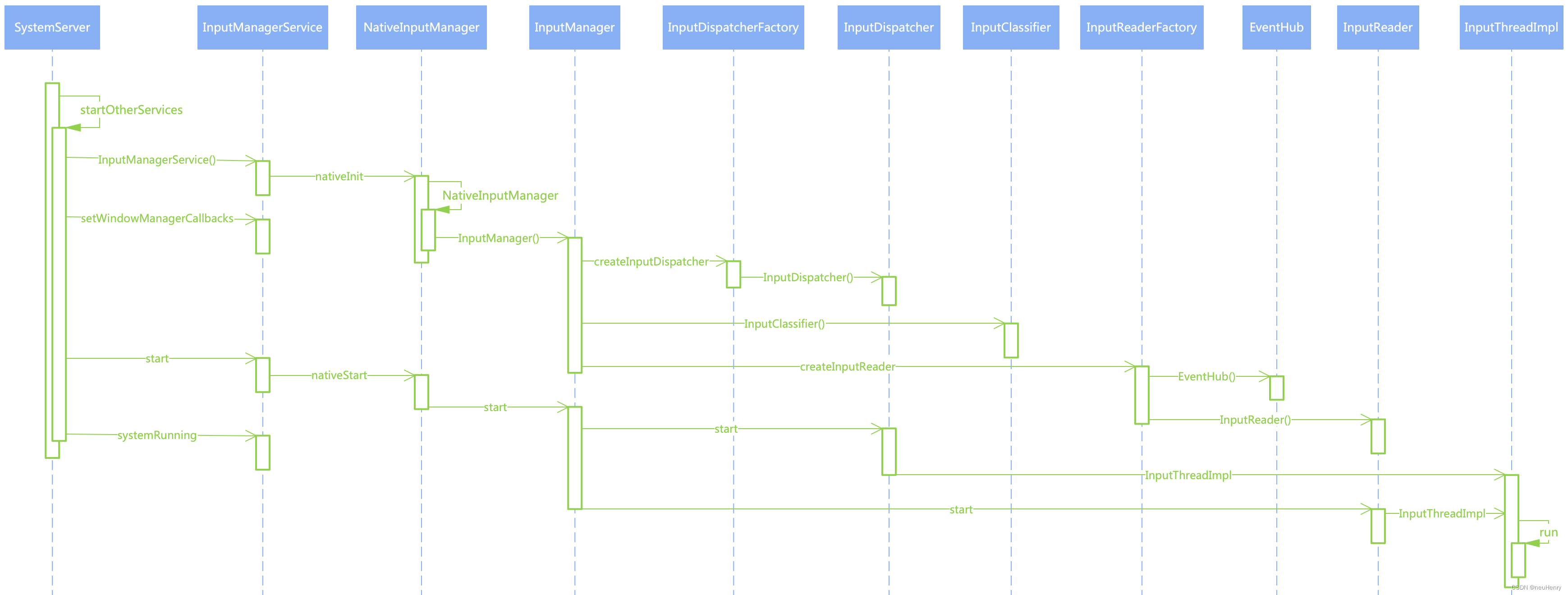
2、IMS 成员关系图

最后结合 IMS 的启动时序图和成员关系图可以更深刻的理解 IMS 系统的构成与启动过程,下一篇文章来继续探索输入系统的重要组成成员,等待后续吧!
参考
- 深入理解Android:卷III
